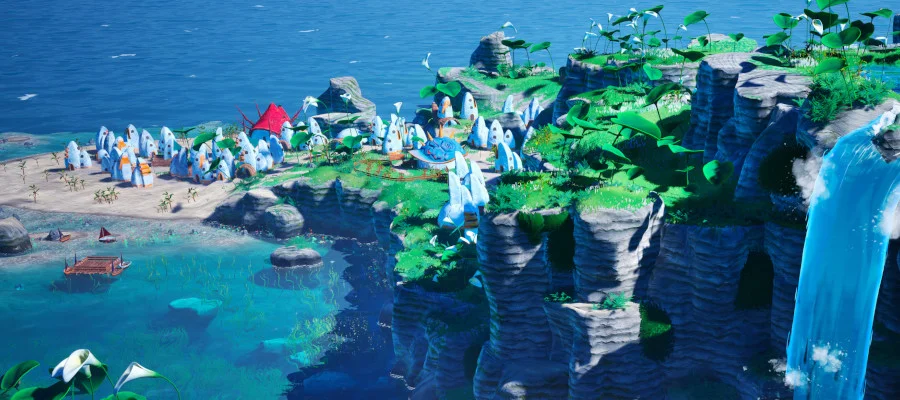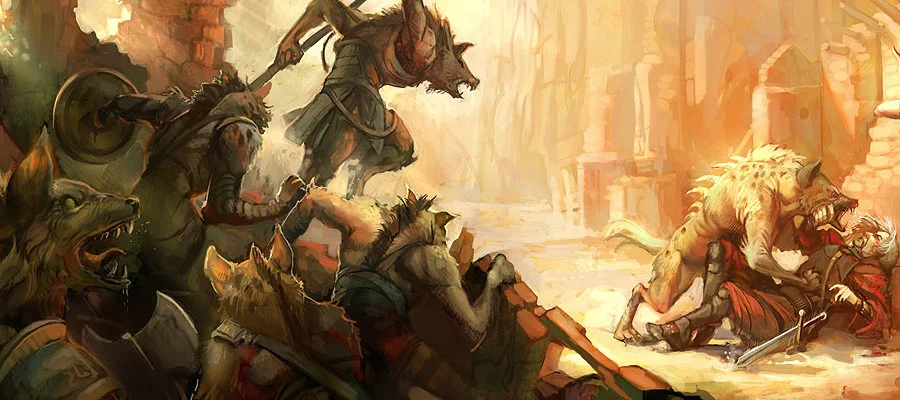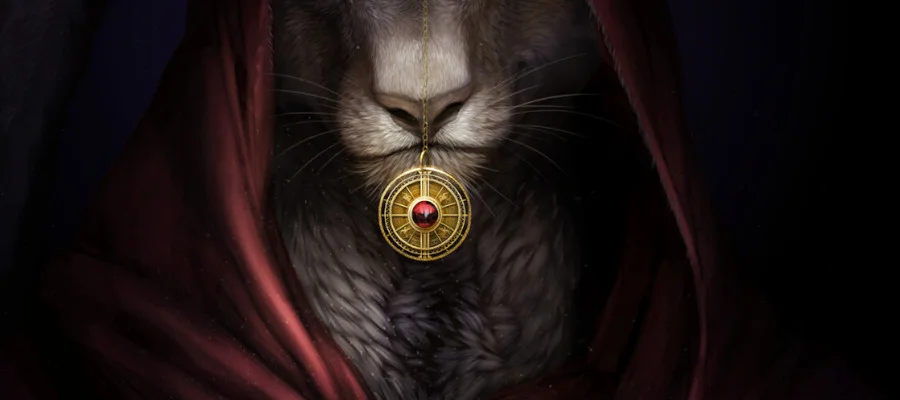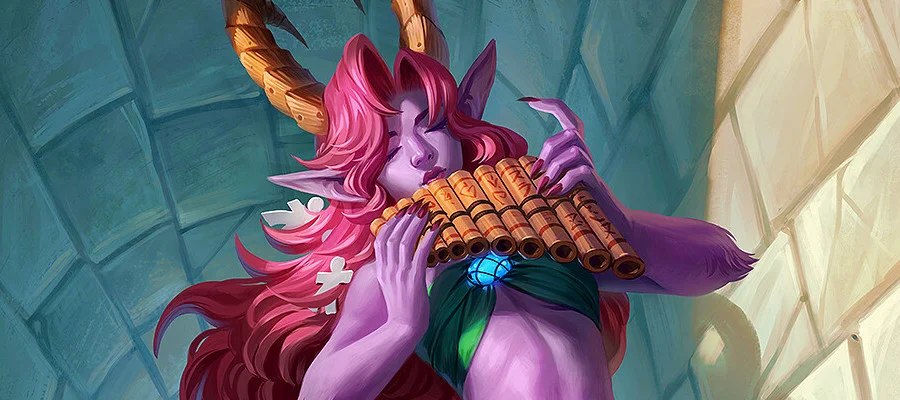I am of the opinion as a designer that D&D settings are more interesting when you consider the diegetic language of the setting, and that language is best served when you do not pre-emptively position players to be racist. It may sound like a lot is loaded into that, but, as I’ve said before, consider the term ‘halfling.’ In the context of a universe, that term is almost certainly a slur, if it’s not a term chosen by the people themselves, since it positions them entirely in their relationship to the other, larger people saying that term. If the term ‘halfling’ is to not be a slur, it needs to be a term the halflings use, and then the question follows: half of what.
I’ve talked about this at length in the article on the halflings, and now we’re moving on to another term that players are going to need that I want to try and make sure isn’t a term that naturally implies every character speaking naturally is a bit racist. That term is beastfolk.
If you’re not familiar, beastfolk is a term used in a lot of D&D settings for ‘furries and near-furries.’ It’s for your anthropomorphic animals, but also for humans with some animalian traits. Often these traits need to be centered around the head; for example, Raptorans are kind of more like elves with wings, but despite having wings and talons, they’re generally not seen as ‘beastfolk.’ In a lot of ways, it’s about the face.
If beastfolk is a term the default observer imposes on the group, then that brings with it ideas of colonialism, the idea that the group doesn’t have a way to centre their own identity, and they didn’t get to choose their own name. That sucks. But on the other hand, I don’t think it’s a great idea to tell the players ‘okay, you know this term that’s in the game books and is in the fiction and is definitely a simple handle for what you, a human, can definitely use to describe these nonhumans? you need to stop using that and now use a more complex term that’s probably not as good.’
No, the solution, in my mind, is to come up with a story.
The story of why the beastfolk call themselves the beastfolk.

Glossary Note: Conventionally, the term used in D&D for this mechanical package is race. This is the typical term, and in most conversations about this game system, the term you’re going to wind up using is race. For backwards compatibility and searchability, I am including this passage here. The term I use for this player option is heritage.
First, in Cobrin’Seil, what does beastfolk cover? It’s a term that you can pretty easily grasp, like if you see any given character of a given heritage, you’ll go ‘oh hey, that’s a beastfolk,’ but there are only so many of those in the setting that are prominent enough to merit large write-ups. There’s a lot of room for smaller cultural groups, but by definition, there are larger and smaller groups. Filling up a bag with rocks, I wanna start with the bigger rocks to make sure they all fit.
In Cobrin’Seil there are six major, established, player-character heritages that have an easy, grab-it-and-go starting point that obviously connect to ‘beastfolk,’ in order of population from fewest to most.
- The Wu-kan, monkey people inspired by the legend of Sun Wukong, who have one large population centre and a bunch of small towns
- The Dio Baragh, goat people exiled from the fey realms, living in isolated towns throughout the world
- The ‘V̵͓̊ì̵͙e̴̗̐r̵̝̚a̴͎͊’, a holding space for a culture I’m still working on of rabbit people
- The Dragonborn, anthropmorphic dinosaur people with a large metropolitan city
- The Abilen, international trading cat people present in almost every major city
- The Gnolls, hyena-like nomadic tribespeople across two continents’ grasslands
And sure, maybe there are more, but they’re much more likely to be unique, small groups living in single spaces. There’s also an asterisk here, for the rat-like psychic people living under the city of Olifar, whose name, ‘Felbraug’ was good enough in 2002 but it’s weak as hell now, especially with ‘Firbolg’ as a really common term in the game parlanace. I have a whole thing about rat people names, we’ll talk more about that another time.
This is a good variety of different types of political groupings, though. Some cities, some towns, some nomadic people, all of which have potential impact on the politics around them but also, crucially, none of them large enough to be particularly important powers on their own. And that’s where the challenge comes, where any individual member of this group could probably be presented as irrelevant to larger, crueller organised societies.
Basically: None of these groups could stand up to the empires of history. The now-extinct Tiefling Empire, the Urd’s sprawling collapsed city-states, the formation of Dal Raeda and the eventual rollout of the King’s Highway from the Eresh Protectorates, or the Eladrin network of Kingdoms, or even the potential hazard represented by Orcish clans — all of these coalitions of larger populations represent potential threats to them.

‘Beastfolk’ is the term for this grouping, because this is a coalition of these cultures. The term is chosen in common language, because it’s a term chosen by the members of this coalition for a term that makes sense to them that they chose, and they introduced it to the other cultures.
This is an area where I get to define a story that’s history rather than myth. Myths? You need to make sure they’re always a bit ambiguous. Any time I write about a myth like an origin myth, it’s always a story with one of at least three possible ‘true’ interpretations of the events that happened or why. Myth needs ambiguity. History is more robust, and where the events that happened can have a more clear, distinct track of information, even if things like motivations are ambiguous.
The history of the Beastfolk coalition starts with the Abilen. Abilen are highly prosocial, and their language system evolved to be extremely good at math, meaning that they almost always became financial experts early in periods of trade. Abilen that needed military defense would often hire other people, relying on mercenaries to support them and defend their caravans. This led to building a relationship over time with the Gnolls of nearby territory, because Gnolls that travelled were often skilled fighters that already could handle overland travel.
Gnoll society was not a currency-based one: They were in fact primarily a barter community, where you often owe people things and they owe you things, which tended to work for social cohesion. If someone owes you four chickens, they can’t get you any chickens if they die, so you’re interested in their long-term survival. This idea of sequences of protected debts helped inspire the Abilen’s own idea for loans as forms of social insurance. The pre-existing relationship between the primarily city-focused Abilen and the nomadic, militant Gnolls, also led to Gnolls being paid to not attack Abilen territory, and it was this relationship that formed the base of the coalition.
I don’t know the initiating event here. There was almost certainly some historical event, some discovery or encounter that meant the Abilen and Gnolls had a reason to get together and have a serious talk about making something formal. But that formal discussion didn’t just include them, as it brought in a number of other of these heritages with the idea that they could see commonality with themselves in terms of being non-human cultures that didn’t have the historical power of the Erd or the spread infrastructure of the human Protectorates. They called themselves the Beastfolk coalition, and chose that name based on a common cognate across their languages, which also led to the development of a shared written language for all the Beastfolk to use.
Basically, ‘beast’ in the context of Common language, is a loanword from the Beastfolk.

In terms of the coalition, ‘Beastfolk’ is a territorial map marker that says to most outsiders ‘respect here or face a big problem.’ Encroachment on or damage to beastfolk territory (by farms or buildings or war machines) represents not just a military retaliation of sorts, but multiple levels of problems. Gnolls in completely unrelated territories will lash out against your holdings, Abilen trade cartels can lock up your economy, but also, forests become very dangerous with Dio Baragh and Wu-Kan suddenly making themselves known, and lone Dragonborn appearing to cause problems for the encroachers. A beastfolk coalition adventuring party could very easily be formed around these ideas.
I know that the Dragonborn were not Beastfolk at first. They’re almost completely at odds with the Beastfolk concept at first, in their cultural disposition — while the Beastfolk are essentially a union of cultural groups sharing political power to ensure that they have some ways to respond to potential encroachment or displacement by other more organised powers, the Dragonborn live mostly in one city, on one island, which is defended by masive basalt cliffs. There are Dragonborn within the city who not only do not consider themselves ‘Beastfolk’ but do not know what ‘Beastfolk’ means. But the adventuring Dragonborn who deal outside that city space have realised the coalition’s value.
Part of being Beastfolk is the idea of being othered to humans, who serve as a functional cultural default, but also, that Beastfolk see one another as common. Dragonborn adventurers usually call themselves Beastfolk as it’s a term that makes life easier for operation in non-Dragonborn lands, particularly because when a human makes an assumption about them, they can direct attention to the idea of ‘being Beastfolk.’

This gives me a few things:
- A different vision of a political power base that doesn’t look like a City or a Country, two things that I know I’m overly inclined towards to see as legitimate power centers.
- A way to distribute power across the landscape that doesn’t look like More Empires.
- A central thematic space that connects a bunch of animal-vibe creatures and presents the way that ideas like racial groups need to be socially/politically defined
- A category for filling cities; rather than giving specific breakdowns on how common Gnolls or Abilen are in any given territory, I can just say ‘Beastfolk are common here’ and that covers a group based on what vibe feels right.
It also has given me something else! See, there’s cultures I want to slot into the Beastfolk grouping but this also gives me a size for them. The cultures that relate to the Beastfolk aren’t going to be more populous and widespread than the Gnolls and the Abilen.
Boundaries are useful!